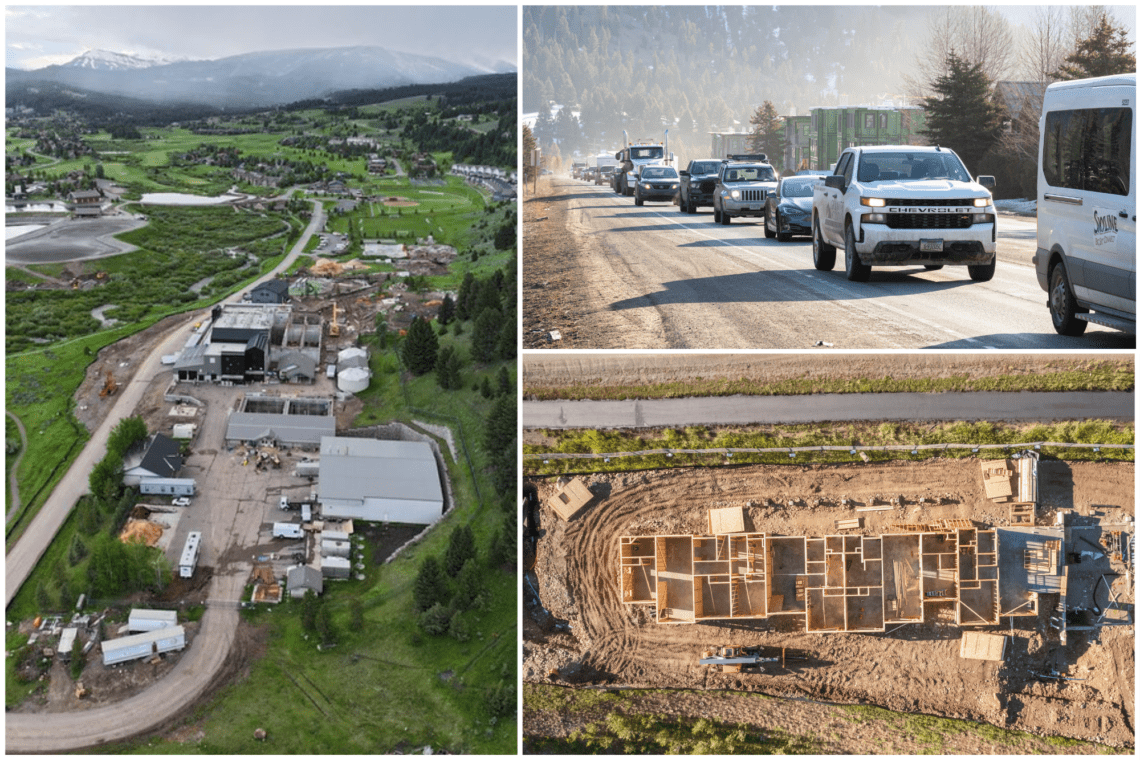Navigating the path through the Capital Improvement Plan
By Daniel Bierschwale EBS COLUMNIST
Last October, I reported on Big Sky’s Capital Improvement Plan—what it is and why it is important. In ski terms, the CIP was described as a solid base, laying the groundwork for Big Sky’s future. To recap, a CIP is a strategic plan outlining large-scale infrastructure deficiencies and projects necessary for the community’s growth and sustainability.
Through the help of planning consultants from TischlerBise, Big Sky’s CIP was updated for the first time since 2011. The new CIP reflects current community need, incorporates the previously excluded Madison County portion of Big Sky and provides actionable steps forward. However, the base is only the beginning. Now the real work begins as we groom the trail, so to speak, refining our approach and preparing the path ahead.
At the time of the previous article, the plan was still a draft. Since then, the Big Sky CIP has been adopted by the Big Sky Resort Area District board and both county commissions and is now a functioning document for future investment. This article will provide an update on what has happened since the plan’s adoption and what steps are still to come.
The Big Sky CIP identified a staggering $777 million in infrastructure needs over the next 10 years. To address these needs strategically, the plan now moves into the following phases of evaluation for those projects forecasted through fiscal year 2028: vetting, prioritization, finance stack development and project implementation.
The goal of the vetting phase is to determine which of the projects are shovel-ready—those fully planned, approved, and ready to begin assuming funding becomes available. The vetting process currently underway involves detailed conversations with project sponsors to assess their readiness and capability to move forward.
Do they own the necessary property or have the legal rights been secured? Have engineering plans been drawn up, and if so, are they comprehensive and approved? Is there a long-term operating plan in place for the project once it’s been constructed?
Answers to these questions will help guide the engagement into prioritization. In this phase, projects will be evaluated for their alignment with the community’s long-term vision. There will be a thorough assessment of their potential benefits and contributions to the impact areas identified in the CIP.
Here’s a list of impact areas and their scope.
Arts and education: projects aimed at enhancing cultural and educational opportunities for residents and visitors alike.
Economic development: initiatives designed to boost local businesses, create jobs and stimulate economic growth.
Health and safety: investments in healthcare facilities, emergency services and public safety infrastructure.
Housing: efforts to address the housing needs of the growing community, ensuring affordable and sustainable living options.
Public works: improvements to essential services such as water, sewer and transportation infrastructure.
Recreation and conservation: projects that preserve natural resources and provide recreational opportunities for the community.
Once vetted and prioritized, the project list will highlight those that are both feasible and strategically impactful for the community. The next steps will involve securing funding and then moving forward with implementation.
We will take a deeper dive into exploring the funding options in a future column.
It’s important to note that the CIP is a living document, not a static one. It is actionable and dynamic. It will require regular updates to stay relevant and effective, adapting to changing community needs and circumstances. This ensures that the CIP remains a valuable tool for guiding Big Sky’s growth and investment decisions well into the future.
When 2033 comes around, our community will be well-prepared and thriving. The trail we’re grooming today ensures our strategic investments will shape a tomorrow where infrastructure meets community needs. It’s the Big Sky Way—finding ways to navigate and maintain our shared future.
Daniel Bierschwale is the Executive Director of the Big Sky Resort Area District (BSRAD). As a dedicated public servant, he is committed to increasing civic engagement and voter education. Many ballot issues impact government services and public funding including subsequent property tax impacts. BSRAD is the local government agency that administers Resort Tax, which offsets property taxes while also funding numerous community-wide nonprofit programs.














